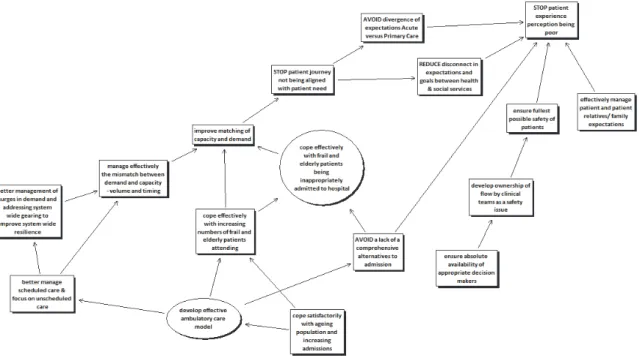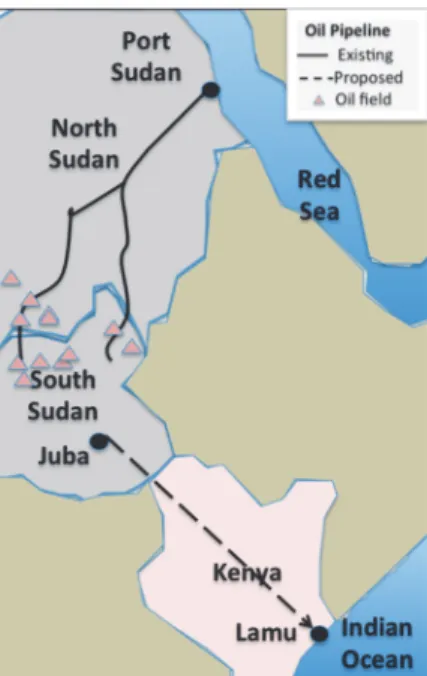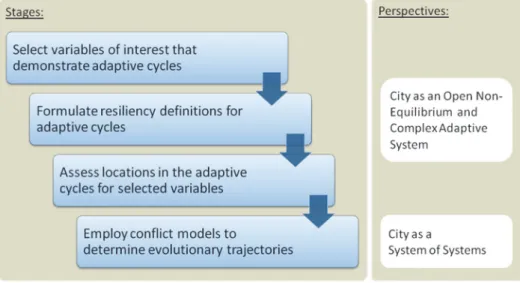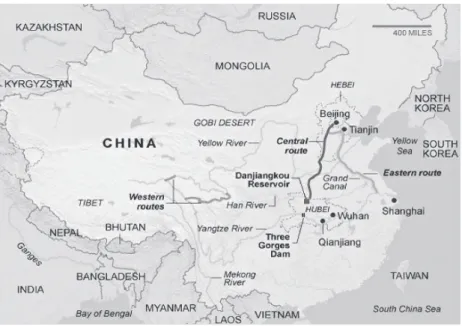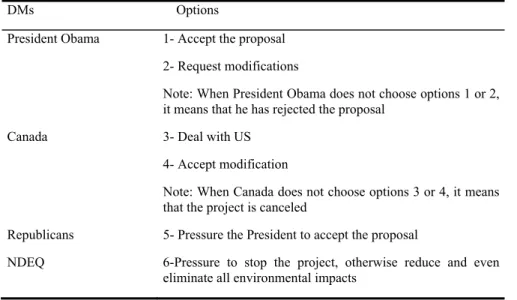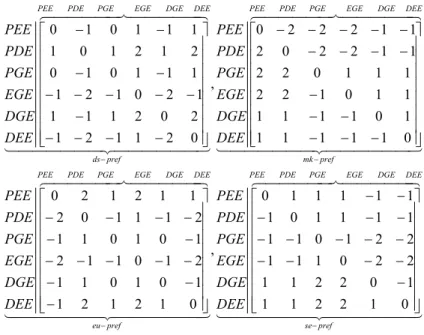Group Decision and Negotiation 2013 is the 13th meeting organized by the INFORMS Section on Group Decision and Negotiation with the EURO Working Group Decision and Negotiation and organized by the Department of Computer and Systems Science at Stockholm University, Sweden. GDN2013 continues the tradition of the Doctoral Consortium in Decision and Group Negotiation held on June 17, 2013 and chaired by Rudolf Vetschera.
SHAREHOLDERS' RIGHTS Say on Pay in the Context of Shareholder Rights
KEYNOTE PRESENTATIONS
A Participatory Model for Public Decision Analysis
Background
This aspect of the research agenda focuses more broadly on the tools and means of how civic content can be analysed, disseminated and used by decision-making authorities in public decision-making and planning. The general need to facilitate the expression of views, concerns and opinions of general stakeholders is essential not only to support decision-makers but also to take a real part in the decision-making process.
Democratic Participation
An important aspect of this undertaking is to analyze the complex issues of how governance arrangements and formal planning processes can be structured as such to effectively accommodate input from multiple citizens in a decision-making framework, including usable and transparent decision-making methods equipped for dealing with a multitude of citizens and multiple decision-makers. This means, among other things, that the background information as well as the decision principles must be communicated together with means to understand and utilize them.
Designing a Participatory Framework
The formal decision-making mechanism is usually problematic, both in terms of hidden agendas and lack of capacity on the part of the decision-makers. The method has been used in several large decision problems involving many stakeholders, such as the design of a flood insurance system for Hungary (Danielson and Ekenberg, 2013), nuclear fuel storage, procurement decisions at the Swedish Railway Administration, investment decision analyzes in industry, flood management (Hansson et al., 201 pr mining (Larsson et al., 2010b)) and many others.
Concluding remarks
Similarly, an iterative communication flow between layers is essential to the recursive process of the model. This research was funded by the Swedish Research Council Formas, project number, as well as the Swedish Government's strategic funding under ICT - The Next Generation.
This is a difficult area and we have tried to understand why and what could be done to improve the situation. We have developed a set of procedures that appear to be reasonable on the surface and we have processes for decision making and tools for negotiation and conflict resolution.
Justice in International Negotiation: Negotiating an End to Civil Wars and Other Issue Areas
This means that lasting agreements lead to lasting peace in only about a quarter of cases. We find that this item is largely independent (or uncorrelated) with the other three parts of the Durable Peace Index.
Humans are Parochial Altruists: Neurocognitive Foundations with Implications for Intergroup
Negotiation
Parochial altruism can be broken down into in-group love (the tendency to benefit the in-group at a personal cost), and out-group hatred (the tendency to derogate and hurt the out-group at a personal cost) (Brewer, 1999). I explore the neurobiological bases of parochial altruism by focusing on the hypothalamic neuropeptide oxytocin.
Parochial Altruism: In-group Love versus Out-group Hate
Parochial altruism is defined as the tendency to self-sacrifice to benefit one's in-group and to degrade and hurt rival out-groups. I discuss the results of a large meta-analysis (Balliet, Wu, & De Dreu, 2013) indicating that parochial altruism is primarily driven by in-group love, and much less by out-group hatred.
Parochial Altruism: Pro-social versus Pro-self Values
Parochial altruism is somewhat similar to what behavioral economists call difference preferences and psychologists call prosocial value orientations. Known for its role in reproduction and social bonding in animals, I present evidence that oxytocin is intimately involved in motivating parochial altruism in humans (De Dreu, Greer et al., 2010).
Parochial Altruism: Intuitive versus Calculated
Parochial Altruism Resides in Oxytonergic Circuitry
Parochial Altruism as Barrier in Representative Negotiation
Social value orientation moderates in-group love but not out-group hatred in intergroup competition. In-group love" and "out-group hate" as motives for individual participation in intergroup conflict.
Joined-up’ Policy-making: Group Decision and Negotiation practice
Introduction
In this paper, we concentrate on the process of helping multi-organizational teams to agree on common goals, and so we discuss a categorization of goals that depends on conceptualizing a goal framework that includes 'core goals' - goals that are essential to one organization, 'meta goals' - goals that could not be easily achieved by either organization on its own, without having achieved goals above or beyond that goal. meta goals, and 'negative goals' - outcomes that are not desired but are possible. We also discuss the importance of the role of principles of group decision-making and negotiation, expressed through a designed Group Decision Support System (GDSS) in facilitating the effective development of cooperative goals – agreed cooperative purpose.
Group Decision and Negotiation facilitated: The Group Decision Support System
System design also recognized that, in group work, there is a significant risk of 'groupthink' (Janis (1972); Janis (1989); Harvey (1988)) which manifests itself through groups making irrational decisions, suppressing dissent or ignoring alternatives due to a psychological drive for consensus. Thus, an important aspect of the GSS process is that of creating deliveries at regular and short time intervals (one delivery - 'removing' deals - at least once every 1.5 hours) (Ackermann et al.
A Goals System as a Goals Hierarchy
It is this means-end structure that determines the meaning of an end, rather than just the formulation of the goal. Thus, the group mapping process facilitates capturing and exploring the systemicity of goals.
The nature of collaborative purpose
Needless to say, there are often some end goals (at the top of the goal hierarchy - representing the broad generic goals mentioned earlier in the paper) that belong to only one of the parties. The goal system shown by figure 2 is dominated at the top of the hierarchy by negative goals edited to produce pseudo-positive wording, but reflects the absolute meaning of prisons which is about avoiding disaster.
Multi-organisational Collaboration: the case of a Private-Public ‘Forced Marriage’
The combined goal system also included several meta-goals as well as goals that were central to each of the organizations. Notably all potential purposes of public value that were "above and beyond objectives" were developed by Utility Co, although the Regulator, as a quasi-public/not-for-profit organization might have been expected to identify such purposes more readily.
Engendering Strategic Conversations
Creating a network of goals gave each of the goals an actionable meaning. Also, as mentioned earlier, the use of a group decision support system allowed anonymous expression of commitment and veto of potential agreements.
Concluding Remarks
However, some of the participants would have continued to be overly dominant – the democratization the system gave us meant that there were none of the usual 'hits'. The public's problem: Making public value in contested times', Creating public value in a multi-sector paper, Joint Power World Foundation Paper,.
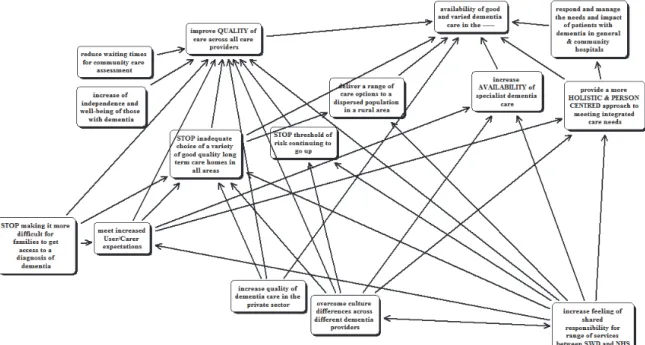
Tackling Climate Change: A System of Systems Engineering Perspective
Abstract
CONFLICT RESOLUTION IN ENERGY AND ENVIRONMENTAL MANAGEMENT
Oil Export Pipeline Conflict between North and South Sudan
Oil Conflict Overview
The CPA signed in 2005 divided the oil from the southern region between North and South Sudan with 48% and 50% respectively (Comprehensive Peace Agreement, 2005). According to Oil and Energy Trends (2011), South Sudan attempted to renegotiate the share of oil from the southern region that would be sent to North Sudan from 48% to 25%.
Historical Evolution for the Oil Export Pipeline Fee Conflict
This is because North Sudan added a new option to the game that placed a condition in the Peace Cooperation Agreement, which was signed in September 2012 between North and South Sudan. So, without agreeing to the security condition that was imposed by North Sudan, South Sudan cannot start producing oil using North Sudan's export pipeline to transfer oil to Port Sudan (Sudan Tribune, 2012).
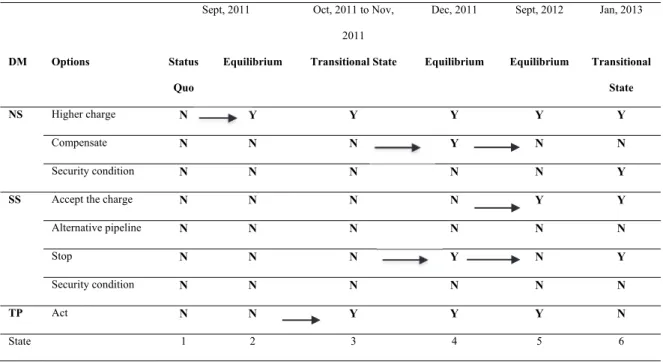
Identifying a Decision Maker’s Fuzzy Satisficing Threshold in a Fuzzy Graph Model
Fundamentals of a Fuzzy Graph Model
To incorporate this flexibility into the fuzzy graph model methodology, a parameter, the fuzzy satisfiability threshold, was introduced (Bashar et al. Hipel et al., 2011). The soft satisfiability threshold of the DM is a number that indicates the level of soft relative certainty of preference required for the DM to find a favorable state.
Guidelines for Finding the Fuzzy Satisficing Threshold of a Decision Maker
In the case of a fuzzy preference, where a DM's choices are represented as preference scales, the DM can have flexibility in determining preferred moves, referred to as one-sided fuzzy optimizations. In other words, each DM in a fuzzy graph model (a graph model with fuzzy preferences of DMs) can have a different criterion to choose his preferred moves.
1 indicates that the state is definitely preferred by the state; 0.5 means that the state is likely to be indifferent to ; 0 means that the state is definitely preferred. Mathematically, if ∈ 0, 1 is the smallest number such that for every , ∈ , , implies that is useful from for DM.
Conclusions
To incorporate this flexibility into the fuzzy Graph Model methodology, a parameter, fuzzy satisfiing threshold, was introduced (Bashar et al. Mathematically, if ∈ 0, 1 is the smallest number such that for any , ∈ , , implies that it is advantageous from for the DM. then it is the fuzzy satisfic rules for the fuzzy satisfic and the DM rules. team of a DM was identified by analyzing historical data about the DM. 2010), Fuzzy Preferences in a Two -Decision Maker Graph Model.
Evolution of Cities and Urban Resilience through Complex Adaptation and Conflict Resolution
The overall research objective is to merge these systems lenses and to obtain a rigorous, operational and dynamic model of urban resilience that deals with both endogenous factors (such as internal decision-making and internal structure) and exogenous factors (such as resource availability and climate variations). In Section 2, the authors propose a framework that integrates literature on complex adaptive systems, non-equilibrium open systems and systems thinking to study the evolution of a city and the resulting urban resilience in its many dimensions.
Framework Overview
Finally, Section 3 concludes this paper with future work on linking adaptive cycles with conflict models through a real urban study.
Connecting Adaptive Cycles with Conflict Models: The Case of Urban Energy Systems
1993), Interactive Decision Making: The Graphical Model for Conflict Resolution. fcm.ca/home/programs/partners-for-climate-protection.htm. 2001), Panarchy: Understanding Transformations in Human and Natural Systems. Journal of Systems Science and Systems Engineering Sustainable Environmental Management from the System Engineering Perspective, in: Jamshidi, M. Ed.), System of Systems Engineering.
Hierarchical Water Diversion Conflict in China
The risk of water shortage caused by SNWDP in areas around the Danjiangkou Reservoir has been determined and evaluated (Gu et al. 2012). GMCR has been successfully applied to the water diversion conflict in the Danjiangkou area (He et al. 2012), where an important reservoir is located on the central route of the project.
Identification of the Hierarchical Water Diversion Conflicts in China
Water transfers between basins in Brazil are compared with two international cases: the Colorado-Big Thompson project in the USA and an Australian water diversion project (de Andrade et al. 2011). Monthly flow data in the reservoir was simulated for optimized operation with minimal risk; a case study in the Yellow River Basin provides approaches to allocate water resources considering a flexible water storage limit (Shao et al. 2009).
Definition of the Hierarchical Water Diversion Conflict
Provincial governments, residents and other stakeholders are involved and their interests and rights can be dramatically affected. Their investigations revealed the environmental, political and economic complexities associated with these large water diversion projects.
Stability Analyses
Strategic Modeling Approach for Third Party Intervention
Third Party Intervention
The application of the inverse approach to GMCR in the real world (modified from Fang et al., 1993).
Case Study
To model the Syria-Iraq conflict using the inverse approach, a desired state is chosen to be the resolution of the conflict. To execute the reverse approach, the desired equilibrium as well as DM and options will be entered into the decision support system.
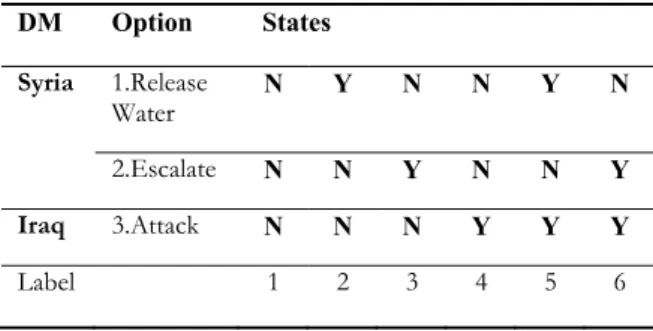
Grey Preference in the Graph Model for Conflict Resolution
Grey-based model for uncertainty in preferences of decision makers
Robustness of Equilibrium in Conflict Resolution
Assessing the robustness of equilibrium from the point of view of the player making the first move of the conflict is one way to resolve the conflicting rankings of different DMs. So in this situation, the equilibrium states are ranked in terms of robustness to the preferences of the player who first deviated from the status quo.
Applying the Graph Model to Strategic Conflicts Arising over the Keystone XL Pipeline Project
Background of the Keystone XL Pipeline Project
In addition to these, political intentions played a role in setting the imposed deadline, by putting pressure on the US president before the election (Cohen, 2012). This added more complexity to the conflict, since the US presidential election was due to take place in November 2012, and several controversial debates were raised among environmentalists, Republican and Democratic parties about the intentions to delay the decision regarding this project.
Modeling Methodology
Insights and Conclusions
Negotiation and Conflict Resolution in Systems Engineering: A Prescriptive Approach
Requirement Negotiation and Conflict Resolution
Overview of the Graph Model for Conflict Resolution (GMCR)
It is clear that >i relation is asymmetric, ∼i is symmetric and reflexive and ∪i is symmetric. In the graph model, DM i's reachable list Ri(s) of a given state 's' containing all states reachable by DM i from state 's' in one step specifies DM i's immediate decision possibilities at state s.
Proposed Modifications
The existing preference structure of the graph model cannot adequately meet the needs of the system design process. In this paper, we used the preference modeling of the existing conflict resolution graph model to solve the conflicting scenarios in the system development process.
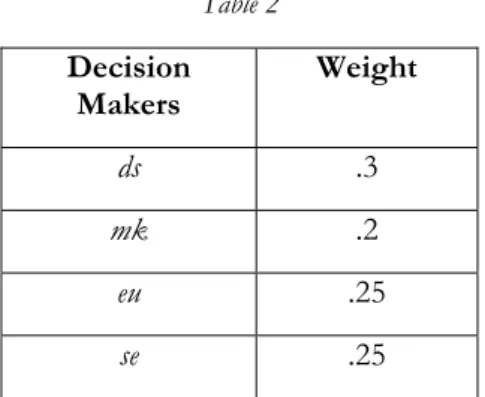
Review of the Literature
Such probabilistic preference can either arise from modeling a single DM that vacillates in a probabilistic manner when choosing between states, or can be used to represent a part in a conflict that is not monolithic. For example, a country can be represented by different diplomats, each of them having a possible different position on the states.
GMCR with Stochastic Preferences and Stability Analysis
Thus, a state s is (α, β)-Metarational stable for DM i if for every state that i can obtain from s, and he prefers s with probability greater than 1−α, then there is a response moving to a state s2 that another DM j can make such that i does not prefer s2 to s with probability greater than β−1. As another example, a state is (1, 1)-Metarational stable for DM i if for every state that i can obtain from s and that he prefers to s with positive probability, there is a reaction moving to a state s2 that another DM j can make such that i does not prefer s2 to s with positive probability.
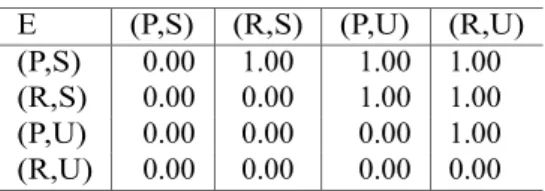
Relations Among Different Stability Notions
The following relationships are valid in GMCR model with stochastic preferences
An Application
Conclusion
Tolba (ed.), Our Fragile World: Challenges and Opportunities for Sustainable Development (precursor to the Encyclopedia of Life Support Systems), Vol. 1, Oxford, UK: Eols Publishers, p. 2012) The Graph Model for Conflict Resolution,. 1971), Paradoxes of Rationality: A Theory of Metagames and Political Behavior.
Added value of professional mediation in electronic conflict resolution processes
Motivation
Online Mediation
These immaterial conflicts are best resolved by human mediators (Bercovitch and Jackson 2001), due to their ability to acknowledge the feelings of the parties, create mutual understanding between the parties, and encourage self-determined behavior (Picard 2002). Services that connect human mediators with disputing parties through electronic means must address the challenges of creating the level of trust and fairness that individuals need (Turel et al. 2008).
Empirical Study
Indeed, it is debatable whether purely automated mediation is actually capable of providing full support to parties in conflicts with high-stakes or high-emotional involvement issues. Indeed, in asynchronous divorce mediations both parties perceived process and outcome aspects equally (Gramatikov and Klaming Acceptance and Evaluation of Automated Mediation in Electronic Negotiation.
Dimensional Analysis Model of Conflict Resolution in Everyday Setting
Conceptual Research Framework
Our aim is to discover the role of communication in conflict resolution process - to find out what type of impact the communication has on the overall conflict resolution process. Therefore, we also focus on the conflict resolution process from the point of view of conflict outcomes.
Data Collection and Grounded Theory Analysis
In addition, every day XnX invited his best friend Thomas to play video games until 2 am, they played in the living room and made a lot of noise, so I couldn't concentrate on my studies. In addition, every day XnX invited his best friend XoX to play video games until 2 am, they played in the living room and made a lot of noise, so I couldn't concentrate on my studies.

Dimensional Analysis Model for Conflict Resolutions in Everyday Setting
Finally, the results show that the types of consequences were broadly divided into positive and negative consequences. Positive consequences were resolved outcome, positive emotions, relational outcome, substantive outcome, distributive outcome, integrative outcome, personal development and unexpected positive effects.
Relationships among Main Categories
The model in Figure 7 shows that the central category, preparation for conflict resolution, leads to the development of strategies. I felt that I, as the client, was in a stronger negotiating position, since they were the ones who ultimately made the mistake that led to the dispute." /"I thought they would rather have a satisfied client than "win" the conflict.".
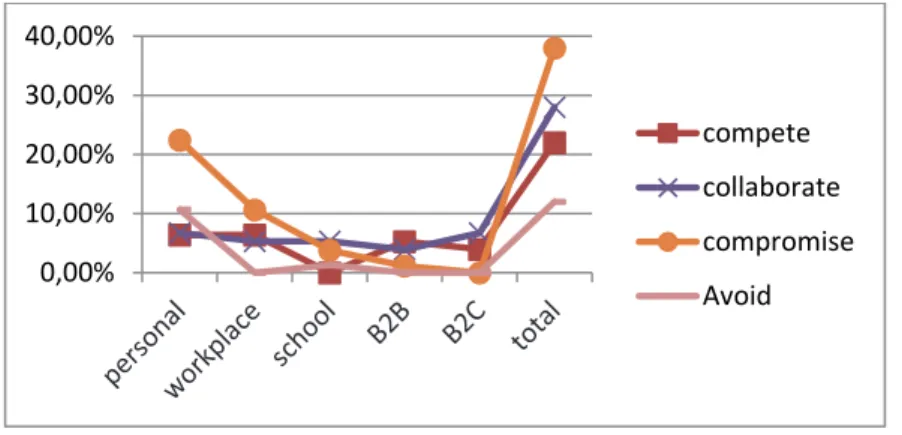
The Optimum Coalition under the Matching Mechanism in Climate Change Negotiations
Model
Preliminary results and conclusion
The ratio of each country's reduction in the nine-country coalition (the largest reduction example for all coalitions) to the reduction in the number of individuals ranges from 2.4 times to 13.5 times. Countries with higher marginal costs such as Japan, DAE and EEX were found to reduce more compared to their single case counterparts.
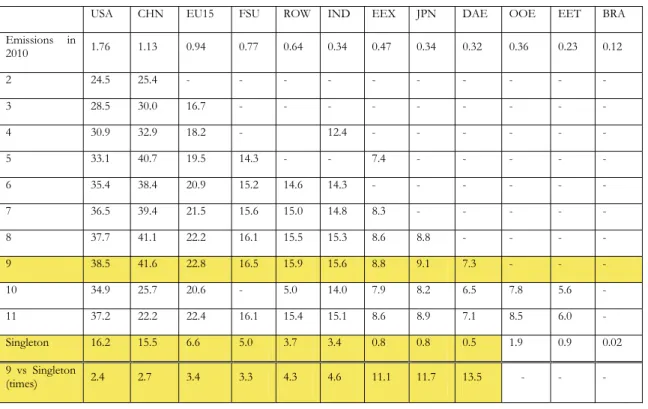
A Model for Achieving Environmental Sustainability through Group Decision Making and Negotiation
The answer involves the Diffusion Process of Innovation (Assael 1987), which is "the process by which the adoption of an innovation is spread through communication to members of a target market over a period of time." The five groups in this process include: Innovators, Early Adopters, Early Majority, Late Majority and Aggards. The authors' intention in the paper is to relate the five capabilities to group decision-making processes for environmental sustainability, such as the Diffusion Process of Innovation.
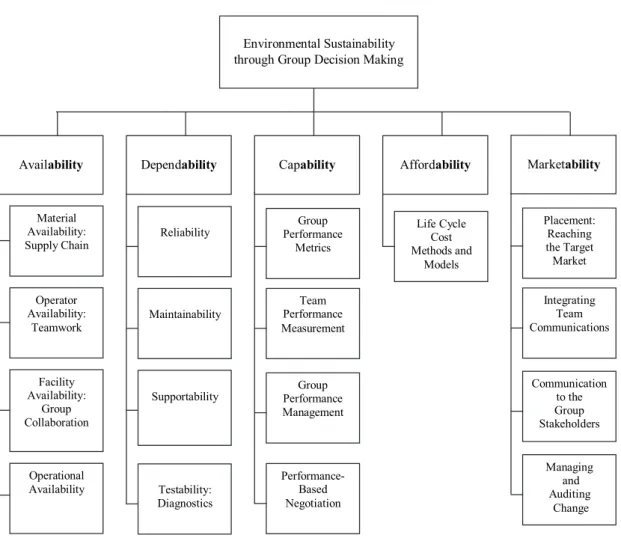
Semi-Automated Group Decision Processes for Response Management to Environmental Threads
When the relevant information is received from the GDSS, the Incident Manager confirms the completion of the decision process. The sample BPMN model of the iterative adaptive group decision process is given in Figure 2.

A Decision Quality Diagnostic Framework: A Decision Quality Perspective
Together, these process principles form a framework for optimizing the cognitive quality of decision outcomes. Keywords: Decision quality; diagnostic framework; decision; Meaning; Architecture; Team Capital; decision quality diagnostic framework; best guess; Methodology for generalized decision assurance.
AUTOMATED COLLABORATION, FACILITATION AND SUPPORT SYSTEMS
Collaborative Decision Making Tools: A Comparative Study Based on Functionalities
Figure 1 provides an overview of the decision-making process, divided into the three phases presented previously (Pre-decision, Decision, Post-decision). This agenda provides an overview of the decision-making process since the pre-decision phase.
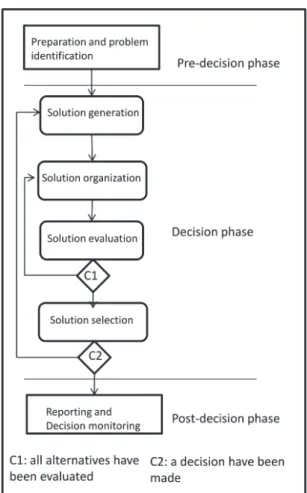
Collaborative Decision Making Tools: GDSS
Tools description
FacilitePro offers support for sending electronic invitations to participants and also for problem definition, i.e. gathering data from previous questions or studies, identifying critical problems, discussing and classifying problems. The post-decision phase is possible through an access to data, generation of reports and monitoring of decisions.
Engineering for Shared Understanding in
Heterogeneous Work Groups - An Action Research study at a German Automotive Company
Introduction Motivation
Therefore, we focus the definition of "shared" for our purpose as a resource jointly owned by several people, based on "the overlap of understanding and concepts among group members" (Mulder and Swaak 2002). In the present study, we mainly focus on shared understanding of the group task, in particular the work process that the group is supposed to document.
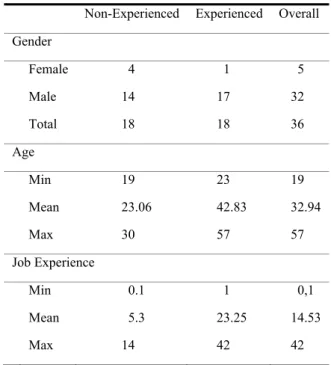
Diagnosis
The problem-solving cycle results in a collaborative process design as an artifact that is developed to change the real-world situation. This matches the organization's request for a solution that can be transferred from the researchers who designed the pilot.
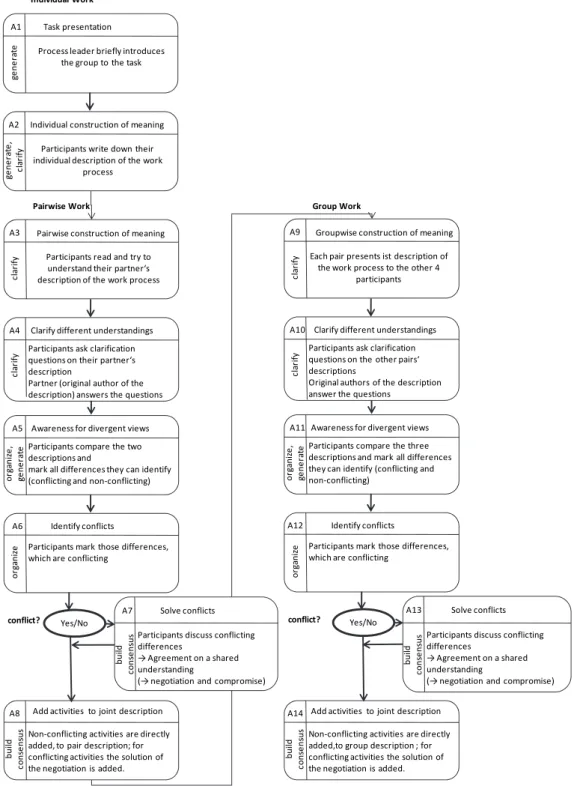
Action Planning
Action Taking
The collaborative process design should be piloted, tested and documented for future use by practitioners. Since the action research approach requires an iterative development of the solution, complete cycles for each group and necessary adjustments were made to the process design after each cycle.
Evaluation
This participant self-assessment is consistent with our expectation that construction, co-construction, and constructive conflict in the collaborative process are associated with an increase in shared understanding. Since self-assessed changes in shared understanding can be biased and only reflect a perceived development, we used the changes in the work process documentation generated by the participants during the workshop as an additional method to evaluate the evolution of shared understanding.
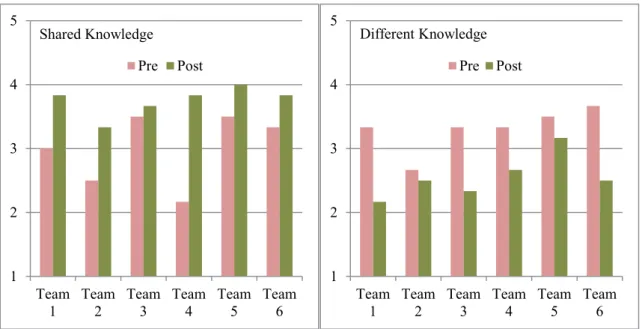
Specifying Learning
They must indicate on a Likert scale how much each other document conflicts with their understanding of the work process. This observation indicates that team learning behaviors foster mutual learning and that experienced participants can also benefit from collaborative effort through questioning and reflection.
Implications, Limitations and Future Research
34;On Theory-Driven Design and Use of Collaborative Systems." International Journal of Human-Computer Studies. 34;A Design Approach to Collaborative Processes: A Multi-Method Design Science Investigation in Collaborative Engineering." Magazine for management information systems.
Toward Optimum Collaborative Group Dynamics for Decision Making for Sustainability: Key
Competencies of Participants and Key Group Characteristics
Results
Social connectors involved in sustainability initiatives (cf. http://scwf12.wordpress.com/living-bridges/ ) can act as people or “living bridges”. The possibility of a CLS typology is currently being explored as part of this study.
Discussion
For example, some are leaders, others take on a more managerial role, while still others act as social liaisons. Given the wide range of activities in which they are engaged, this is perhaps not a surprising revelation.
Helping Facilitators Build on Experience When Preparing Meetings With Logical Information
Systems
They are obtained by relaxing properties or values in the current query that represent the description under construction of the new assembly. The suggestion mechanism can adapt to each new state of the knowledge base.
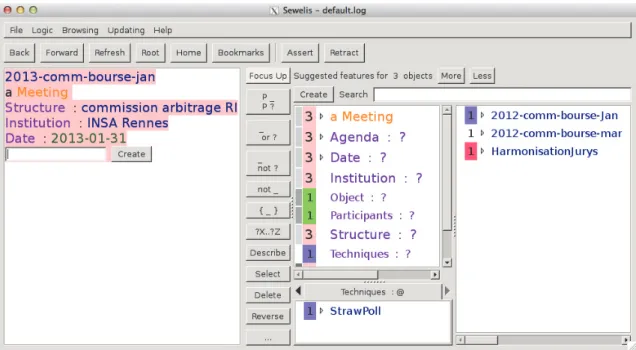
Combining rank-dependent models and rule-based aggregation for experts’ joint decision making
Context
Information at hand for the decision-making problem
Decision-making support
Therefore, this article advocates the use of predicates (Azibi, 2002) to model the conditional part of the rules. Thus, a set of disjunctive rules (i.e., the rule base consists of rules linked by an 'or' operator) is necessary.
Analyzing expert and novice facilitated modelling in problem structuring workshops
By demonstrating behavioral differences between experienced and novice counselors, our research contributes to PSM theory. On the other hand, by showing behavioral similarities between expert and novice facilitators, we provide empirical evidence for the claim that PSMs can be taught to stakeholders to enable them to facilitate and manage workshops themselves without the support of experts.
Utilization and Impacts of Collaborative Information Technologies: Global Comparisons
Research Background
However, a key limitation of past studies is that most of them have focused primarily on the use of a single CIT in the organizational context. Although a recent study has investigated the use of CITs across organizations in several global regions (Bajwa et. al. 2008), their impacts across organizations in global regions remain largely unexplored.
Study Methodology
Similarly, practitioner insights also suggest that the use of certain ITs (for example, VoIP, text messaging, screen sharing, video conferencing and presence awareness tools) improved performance in organizations that had implemented these IP-enabled tools compared to those that had made no investment in them (Frost and Sullivan, 2009). Once again, these findings are limited to information and communication technologies (ICTs) and do not explore a myriad of collaborative tasks that can be supported by CITs and the organizational-level impacts that result from the use of CITs that have much broader functionality than ICTs.
Preliminary Results
The use of CITs was found to be the highest for communication and information and knowledge sharing during collaboration. A five-point Likert-type scale (1 = strongly disagree, 2 = disagree, 3 = neutral, 4 = agree, 5 = strongly agree) was established to measure the level of agreement with each of the impacts resulting from the use of CITs in the organization.
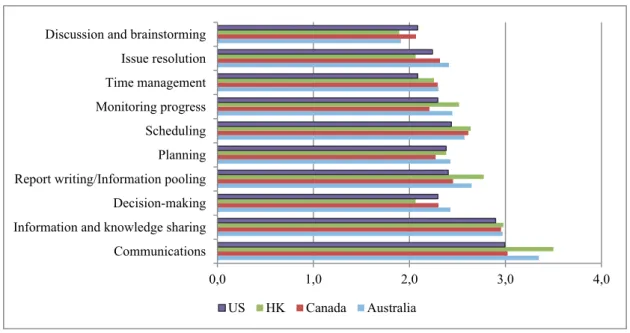
Dynamic Knowledge Support for Decision-making and Problem-solving
The model was validated during a longitudinal case study conducted in one of the world's leading software and consulting organizations, currently employing more than 245,000 individuals (Sandhawalia and Dalcher 2010). The paper is organized as follows: the next section discusses the theoretical concepts of KM processes and knowledge flows and their impact on decision-making and problem-solving processes; In the 3rd part, the research methodology is presented and the details of the case study and data collection and analysis methods are given; Section 4 presents the research findings and analyzes how dynamic knowledge identified in the case study organization supports decision-making and problem-solving processes; In part 5, the conclusions and consequences of the research are presented; and Section 6 discusses the limitations of the work done and also highlights opportunities for future work.
Theory Development
The research proposals required the study, analysis and identification of knowledge flow between functional areas of the development effort. Researchers were present in coded access areas at the team workplace for the half-day session on each case and were able to observe, study and record team interaction and work methods and practices.
Findings
Integrating experience and reflection creates further dynamic knowledge, which can transfer the project management area to the decision making area. The decision-making functional area benefits from product-specific learning from the quality area and the dynamic knowledge of the project management area.

Assessing the K-DFM
By presenting the flow of knowledge through the feedback loops, K-DFM enables the organization to provide knowledge management support to its software development and project management processes. Thus, K-DFM appears to match and satisfy Rubenstein-Montano et al.'s (2000) criteria for knowledge management frameworks.
Conclusions and Implications
5 Recognize the organizational culture and knowledge management practices should be compatible with the culture. Takes into account non-technical aspects of software development; knowledge activities within and between the functional areas rely on the culture of the organization.
Limitations and Future Work
34; Social Capital and Knowledge Integration in an ERP Project: The Importance of Bridging and Bonding" British Journal of Management. Simon, H.A, (1977) 'The New Science of Management Decision,' Prentice-Hall Inc. 2003) 'Knowledge management beyond codification: knowledge as a practice/concept, Journal of knowledge, ppp, No. for the implementation of knowledge management,'.
Group and Negotiation Support Systems Research from 1990 to 2010
Group and Negotiation Support Systems Research
The sample of articles analyzed is GSS and NSS research published between 1990 and 2010 in 16 journals. In answering research question (c), "How important is GSS and NSS research?", the practical relevance of the research in each article was analyzed by both an IS practitioner and a managerial user.
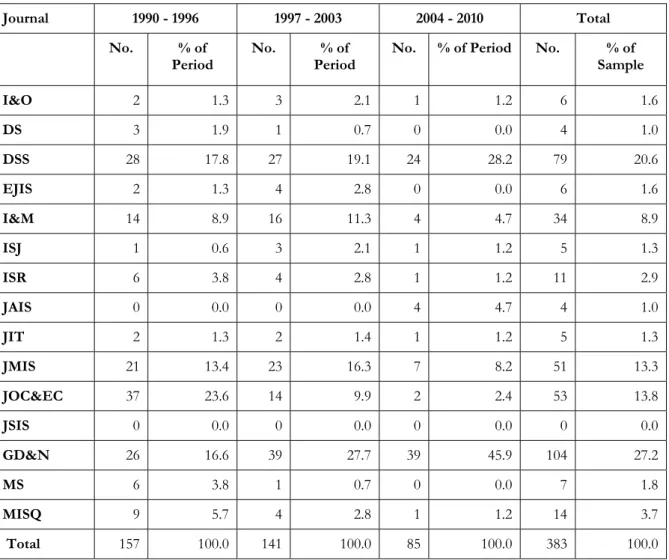
Issues and Strategies
Conclusions and Limitations
2004), a paradigmatic and methodological examination of information systems research from 1991 to information technology to support group meetings. Business Process Re-engineering: Information Systems Opportunities and Challenges, pp. 2004), Design Science in Information Systems Research.
MODELING NEGOTIATION CONTEXTS
Linguistic variables and TOPSIS-based negotiation support
Linguistic variables in negotiation Basic notions of linguistic variables
The linguistic term set is used to express the linguistic value analytically and to describe the evaluation of the alternatives according to different criteria. In negotiations, there are several things that can be judged by the linguistic variables.
Negotiation model for linguistic definition of negotiation problem
For example, the issue options of the return policy (X = "return policy") can be defined by means of the separate contract for returns (a document of several pages). In their evaluation, linguistic terms such as "good", "fair", "poor" can be used that make up the group term T(X) = {Poor, Fair, Good}.
Supportive tools for linguistic definition of the template
2003), Negoisst: a negotiation support system for electronic business-to-business negotiations in e-commerce. 2012), TOPSIS-based approach to assess negotiation offers in negotiation support systems. In: Teixeira de Almeida, A., Costa Morais, D., de Franca Dantas Daher, S. Editoria Universitaria, Federal University of Pernambuco, Recife The concept of a linguistic variable and its application to approach reasoning: Part 1., Information Sciences.
The first four elements of the eight-tuple (1) constitute the negotiation template, while the last four are the elements of the negotiator's negotiation offer scoring system.
Negotiation template evaluation
The solution obtained in the first iteration can be considered a reasonable improvement of the negotiated agreement and is generated on the basis of the negotiated agreement and PI (see A(1) in Figure 2). The solutions from further iterations are determined on the basis of the new reference levels ref(t) reflecting the worst acceptable rating for each retailer defined by A(1), and the ideal reference PI.
Final remarks
All of them can be proposed as the alternative contract improvements and renegotiated in the post-negotiation phase. Two-reference procedure in generating the improvements of negotiated agreement in the negotiators' rating space (S1,S2).
